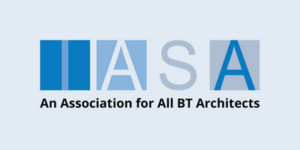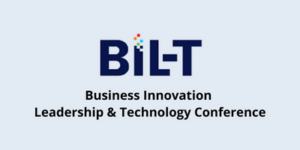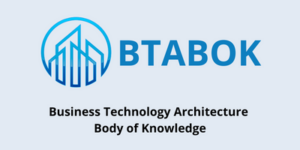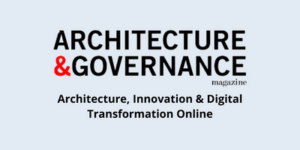Digital Business Event
THE AGENDA
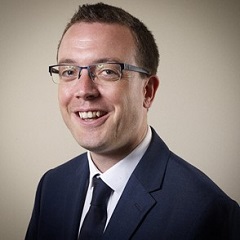
9am – 10am: The Evolution of Business as Usual (and Architecture)
OLIVER CRONK
Chief IT Architect at Tanium
Even before the current challenging pandemic the world has been changing faster than we can keep up with. We have seen significant changes to “business as usual” with a forced acceleration of digital business driven by necessity. The pandemic has also reconnected many with the natural world (as much as modern civilization sometimes makes us forget – we are ourselves part of the wider natural ecosystem). As a result sustainable digital business is no longer a nice to have – businesses will not sell, operate or retain talent in the medium term without re-imaging the way they operate to be a sustainable digital business.
Architects need to think about how they Architect Tomorrow in a way that allows their organizations to rapidly adapt – and continue to be adaptable, whilst ensuring that the way forward aligns with being a sustainable organization that builds towards the much needed more positive society of tomorrow. Core foundations of a sustainable digital business are visibility and collaboration and Oliver will touch on how Architect Tomorrow and Tanium support the modern enterprise and those tasked with re-imagining it.
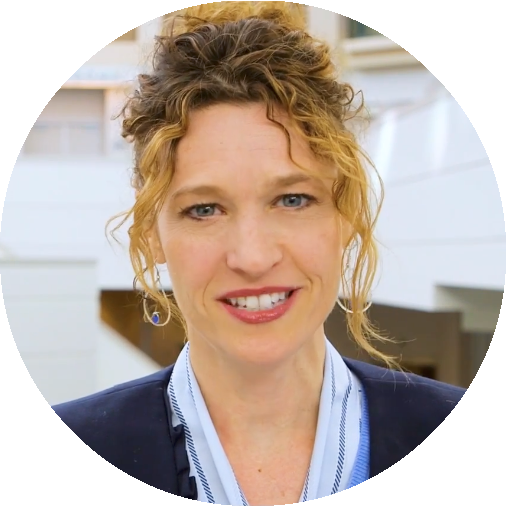

10am – 11am: The New Digital Experience Supply Chain – and How It Will Transform Everything
WHYNDE KUEHN
CHARLES ARAUJO
Industry Analyst, Author, and founder of The Institute for Digital Transformation
The supply chain defined the Industrial Era. To create value it was all about optimizing how you marketed, produced, delivered, administered, and supported a mass product as you served a mass market. But in the digital era, this equation has been turned upside down. Creating value in this tumultuous time isn’t about the supply chain — but about optimizing the customer experience, which is increasingly digital. To do so, organizations will need a new type of supply chain — one that helps them curate and optimize the delivery of a customer experience that will deliver differentiating value in a fast-moving and hyper-competitive market.
In this thought-provoking conversation, Whynde Kuehn will interview Charles Araujo, industry analyst, author, and futurist, to explore the forces that are shaping the competitive landscape for the modern enterprise and how enterprise leaders must transform their organizations for this future. This will demand that organizations not only reorient themselves around the digital experience, but also that they use it as the focal point to transform their business models, operating models, and the nature of work itself.


11am – Noon: Fireside chat – Fighting Techlash and Fear of the Future
BRICE OMINSKI
MICHAEL NELSON
directs the Carnegie Endowment’s Technology and International Affairs Program
Techlash is a problematic obstacle for a future flourishing digital economy. General opposition to technology directly challenges the promise of a digital age of progress, prosperity and competitiveness. Techlash, this fear of the future, is gaining momentum as a generalized opposition to technology. Bans on technology adoption and stringent regulations on certain technologies are rising in popularity. Yet, policymakers need to resist techlash and embrace a sense of pragmatic realism and take steps to embrace these challenges by adopting a more realistic viewpoint. In this question and answer discussion, Michael Nelson will address some of the critical concerns and takes a stance to fight techlash and fear of the future to support a genuinely vibrant digital future and promote greater equality for everyone.

Noon – 1pm: Business Architecture: Strategy Execution’s Secret Weapon
BRIAN CAMERON
Associate Dean for Professional Graduate Programs in the Smeal College of Business at the Pennsylvania State University
Failure to execute strategy is the most significant management challenge facing public and private organizations in the 21st century. In fact, according to economist Michael Porter, more than 80% of organizations do not successfully execute their business strategies! Porter estimates that in 70% of these cases, the reason is not the strategy itself, but bad execution. Most organizations have a strategy, but few are able to align strategic objectives and tactical demands to successfully execute the strategy and drive change. Developing a blueprint of the enterprise that provides a common understanding of the organization is a core component of the strategy execution and transformational change process. The discipline of business architecture enables companies to see where they are, where they want to be, and how to achieve the end goal. The business architecture skill set has the potential to be the bridge between strategy and execution that is missing or poorly functioning in many organizations today. Discover why it’s vital to develop a blueprint of your enterprise that provides a common understanding of the organization, and why this needs to be a core component of the strategy execution and transformational change process. Learn how the discipline of business architecture enables companies to see where they are, where they want to be, and how to achieve the end goal.

1pm – 2pm: Multi-cloud – future of the cloud?
ULRICH HOMANN
Corporate Vice President in the Cloud and AI business at Microsoft
The topic of multi-cloud is a core theme of customer, partner, and solution developer communities. Where are we with respect to being able to pull off in cloud computing something that has eluded the technology world throughout and across many technology dimensions (OS, Databases, runtimes, etc.)? How would one tackle the problem? The discussion will talk through myths, reality, and ways forward.

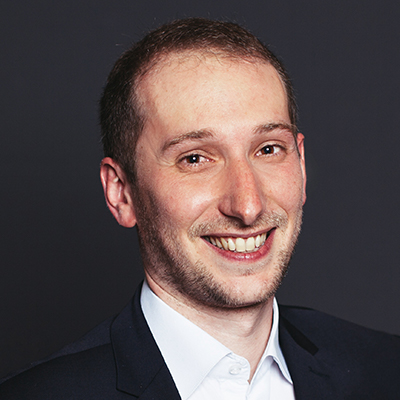
2pm – 3pm: Increase EA’s value: Architecting for resiliency and adaptability
DAN HEBDA
Chief Strategy Officer MEGA International
YANNICK RUDLOFF
VP & North America Managing Director, MEGA International
Today companies are focusing on rethinking business models and accelerating digital adoption. To do this, companies need real-time access to review and adjust IT roadmaps and business capability maps, establish safe mode operating models, and provide guardrails to Agile teams that are working on projects to propel growth. This webinar will share a 4-step process companies can use to architect for resiliency and enable business continuity.

3pm – 4pm: Paul Preiss interviews Jeanne W. Ross with a talk on Architecture
JEANNE W. ROSS
Head of MIT CISR
Jeanne is head of MIT CISR and conducts academic research that targets the challenges of senior level executives at CISR’s nearly 100 global sponsor companies. She studies how firms develop competitive advantage through the implementation and reuse of digitized platforms.

4pm – 5:00pm: An Open Discussion of Trends – Past and Future
STEPHEN COHEN
Chief Architect at Microsoft Public Sector Services
ULRICH HOMANN
JUVAL LOWY
MIHA KRAJL
The panel will discus among themselves as well as engage the audience in a moderated conversation about the trends in architecture that lead us to where we are as well as those likely to lead us into the near and distant future. The panelist; Ulrich Homann, Juval Lowy, and Miha Krajl have decades of experience, been delivering architectures through decades of change and have relatedly demonstrated their ability to move their career, their customers , and their architectures in the right direction.

5pm – 6pm: The Immersive Technology Frontier
POPPY CRUM
Chief Scientist at Dolby Laboratories
We’re all familiar with technologies such as Virtual Reality (VR), Augmented Reality (AR) and the recent exponential increase in wearables to track our vitals, our movement, and even our sleep. The application of these technologies in our personal and professional lives is starting to become a daily occurrence for so many of us. The question being posed in this thought-provoking session by Poppy Crum, Chief Scientist at Dolby Laboratories and Adjunct Professor at Stanford University, is “What’s next?” In this informative discussion, Poppy speaks to advancements in sensors and AI, that can use the space around us to understand our physical environments we work and live in, and how they are impacting our health, happiness and productivity.

6pm – 7pm: Architectures that support modern government scale operations
STEPHEN COHEN
Chief Architect Microsoft Public Sector Services
Todays government architectures do more than just guide governments through technical risks or aid modernization. This session will provide a set of architectural approaches that support todays governments as they navigate complex multinational decision making, increased transparency, real time citizen involvement, and clear accountability for measurable mission and citizen outcomes. We will review some implementation patterns as well as discuss specific strategies and trends.

7pm – 8pm: Leapfrogging Towards Industry 4.0 with Digital Enterprise Map
AARON TAN DANI
Chairman, IASA Asia Pacific / Chief Architect, ATD Solution
The essence of Industry 4.0 is interoperability, information transparency, and decentralized decision-making. Technology has accelerated business operations to help businesses staying relevant and having the digital agility to respond to changes in the competitive edge. Many enterprises are still figuring out on how to embark upon it. The message is clear, for business to forge ahead, it needs to move towards Industry 4.0, and require to transform in the areas of Thought Leadership, Customer Journey, Skillsets, Information, Operating Model and Digital Business Operation. This session will provide insights on how to embark and embrace Industry 4.0 successfully by using the Digital Enterprise Architecture Map for continuous transformation.

8pm – 9pm: Next Generation Digital Financial Services: Accelerating the Journey to Digital Maturity
BILL GENOVESE
VP of Corporate Strategy Financial Markets at Huawei Technologies
In this session we will have a discussion of the evolution of financial services, and what it may look like in terms of “next generation digital financial services” delivered through innovative new business models and leveraging digital technology accelerators, to deliver ubiquitous, embedded digital financial services in our children’s lives. There are six prevalent business and technology platforms delivering innovative digital financial services today. Which models and platforms will pull ahead to lead market share in the next 5,10, 20 years? What types of digital technology are they leveraging and how is it applied to make digital financial services more relevant seamlessly in our lives?

9pm – 10pm: Fireside chat – Who’s Shaping Our Digital Future?
MICHAEL NELSON
Directs the Carnegie Endowment’s Technology and International Affairs Program
In this Q & A discussion, Michael Nelson will address issues around who is shaping our digital future and steps that we need to take to safeguard our world.

10pm – 11pm: How Digital Business is empowered by its customers – It is a reimagination of how you do business
SUBRAMANIAN GOPALARATNAM
CTO of Resulticks
Digital Transformation is much hyped term in the last few years where there is a confusion of digitising the legacy. The actual transformation is not about continuing the same business process using technology rather redefining how you define your products and services and how do you reach your customers and contextually engaging them and ultimately converting them to retain. In the digitally transformed world, your centre of the universe is your customer and everything has to be built around them.

11pm – 12am: Re-Imagine – Alignment of Business and Platform Architecture for Digital Innovation, Agility & Strategy Enablement
VISHAL CHOKSI
A passionate technology leader and awarded Chief architect
EA, combine design thinking and Agile to drive Strategy Enablement (aka Digital Innovation and Transformation) ”Business model and technology innovations are relentless, as each organisation must learn and experiment to develop products, services and new ways of working. EA and technology innovation leaders must use a combination of iterative, experimental methodologies to support digital innovation efforts. Overview of Business Design – Design Mindset, Methodologies and Tools to foster strategic thinking “Experience” and “Capability or Service” based Planning, and alignment of Capability to Service DesignDevOps, design thinking, product management to underpin platform strategy for Agility, Innovation and value creation. Putting it All together: Platform Strategy and Industry vertical reference model of how technology organisations are approaching Platform strategy, removing “data silos” to drive business and technology Innovation.

12am – 1:00am The evolution of human capital management
SHERA L. HALICZER
General Manager at Infor Israel
In this session, Shera will discuss the evolution of human capital management and what it may look like in the future, as shaped by forces such as new digital business models, innovative technology, corporation social responsibility and the physical requirements post pandemic. She will cover five key shifts that are occurring that will fundamentally change the Employment Lifecycle: Recruit, Deploy, Develop, Reward, Retain and Grow. Shera will also discuss what we need to do now to transform our organizations to be ready for these shifts and make sure they can attract and maximize the most precious resource: People.

1am – 2am: Cloud transformation with Enterprise Cloud Landing Zones & DevOps
DENNIS MULDER
Chief Architect for Azure at Microsoft in The Netherlands
Discussion about the importance of a strong Enterprise Cloud Landing Zone with large enterprises & regulated industries to transform to DevOps.
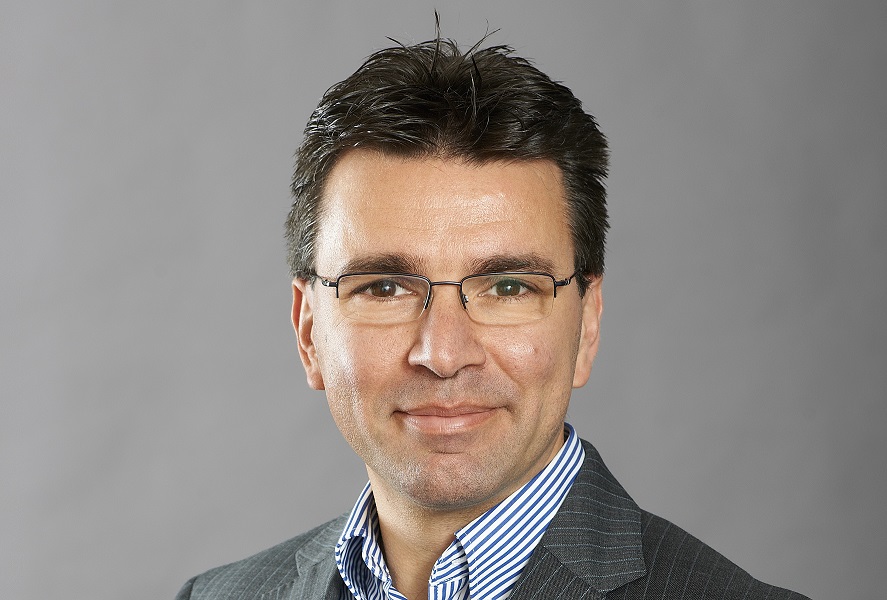
2am – 3am: The changing role of the architect
GUNNAR MENZEL
Chief Technology and Innovation Officer Capgemini Europe
The Role of an Architect is shifting. Gone are the days when we were mainly concerned with technical aspects. To drive the digital agenda we as Architects have to become part of the business. During the presentation Gunnar will detail how they in Capgemini see the role of an Architect shifting, what it means to be an Architect and what success means.
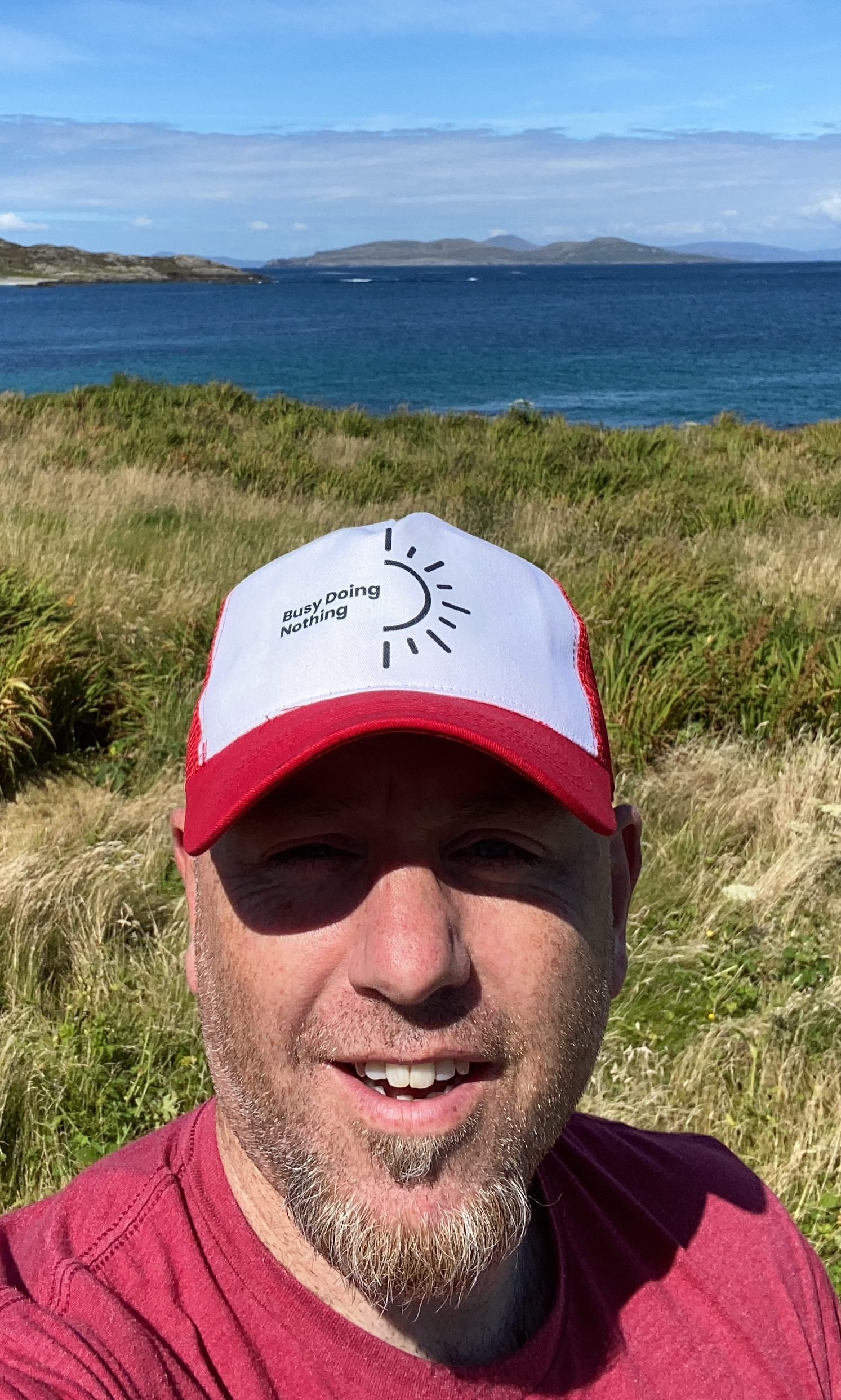
3am – 4am: What the VUCA? – digital responses to COVID -19
GAR MAC CRIOSTA
Digital Advisor – Health Service Executive
COVID-19 hit; country by country the world ground to a halt. We all became familiar with the headline stats, epidemiology became an interesting new profession. The R-number and contact tracing entered our lexicon as things we all knew about. One good if it’s low, the other something we needed to be able to do. March 21st Singapore released the TraceTogether app a Bluetooth, proximity-based digital contact tracing app. Many other countries had already started on similar journeys to build a system that could use technology to speed up and solve the problem of warning people when they became close contacts. The journey started on our national patron saints day March 17th – after 100 days (100 days in COVID time approximates to 3 years in the old world) an app was born (110 days there was a long labour). This is the story of all the apps born or buried during COVID-19 crisis to-date. It’s a story of rapid decision making, global collaboration, intense external scrutiny and hopefully redemption.
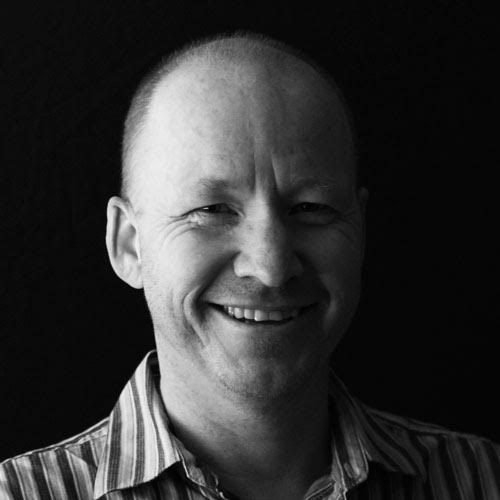
4am – 5am: Digital Business: Design for the Future, Remember the Past
NEIL MULHOLLAND
CEO and Principal Architect of Enterprise Blueprints
There are many advantages of migrating to the Cloud and there has been a huge momentum built over the past two years in major corporations moving to cloud based computing. Successful migration to the cloud can mean the difference between gaining competitive advantage, or driving even more cost into the business. Keep advisors focus on the ‘Five Rs’ approach – Rehost, Refactor, Revise, Rebuild and Replace.
At Enterprise Blueprints our experience tells us there are two key threads to any cloud migration that run counter to this generic advice. First of all, following the five Rs route can leave your cloud migration hamstrung, significantly or even permanently delaying the potential benefits of cloud computing. So we outline an alternative with five key dimensions so you can access your benefits faster. In parallel we focus on the second crucial thread which is to ensure you understand the past. How do you get to a point where you fully understand your legacy environment so you can optimise its ultimate migration (if appropriate) to the cloud. Bringing these two threads together can accelerate the immediate benefits and optimise your outcomes longer term.

5am – 6am: Dealing with Rapid change using Buffet Style Architecture
MARK GREVILLE
VP of Architecture at Workhuman
Exponential growth of technology change is happening, and it’s vitally important to react to it before it consumes your technology department and eventually your firm. Mark Greville will present a decision process to assist with managing rapid change. He will propose a method of public self-governance to break up complex governance structures via a modern, decentralized approach. In the process he will discuss Hurricane Katherina, drilling for Oil, Ray Kurzweil, a chessboard and a story about Rochester, New York.

6am – 7am: Evaluating Digital Architectures
SIMON FIELD
Principal Consultant, Lefert Consulting
This presentation will explore how architecture analysis can embrace examination of the architecture of digital services using similar techniques to those that have evolved to analyse software systems. But I will suggest that we need to look beyond the traditional Non-Functional Requirements when identifying the architecturally significant requirements that need to be examined. Using a case study drawn from the UK’s leading auto insurer, I’ll show how a quality and capability model, used in conjunction with the Solution Architecture Review Method (SARM), enabled them to evaluate four competing architectures for a transformed insurance claims service supported by a new software system.

7am – 8am: In this far reaching interview, we sit down with Heather E. McGowan
HEATHER E. MCGOWAN
Future of Work Strategist and author of The Adaptation Advantage
In this far reaching interview, we sit down with Heather E. McGowan, LinkedIn Influencer on the Future of Work and author of the new book The Adaptation Advantage. We discuss topics such as what work will look like post Covid-19, what organizations need to do to be able to adapt to future challenges, and how to develop the skilled resources we need to navigate an ever-changing business landscape.
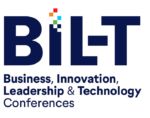
8am – 9am: Digital Business: Designing For the Future, An Editorial Spotlight
Join the BIL-T Conference Committee
Join us for a fireside chat with the BIL-T Conference Committee, where they will reflect on takeaways from the event as well as what it means to the strategy and structure of organizations. They will also explore the role of architects in creating and transforming organizations for the future.


